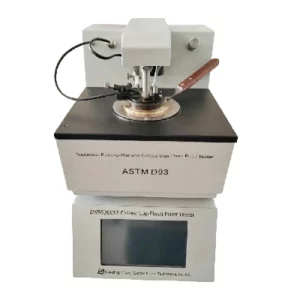The flash point is essentially the lowest temperature of the liquid or semi-solid at which vapors from a test portion combine with air to give a flammable mixture and “flash” when an ignition source is applied. Flash point testing is required in the petroleum industry to characterize fuels and petroleum-based products as part of quality control and to meet safety regulations concerning the transport of these products.
Development and history of flash point testing
The discovery of petroleum and the increased use of flammable distillates in the 19th century for lighting and heating in place of animal and vegetable oils led to a large number of explosions and other fire-related accidents.
Legislation, such as the UK Petroleum Act in 1862 and the German Petroleum Regulations in 1882, quickly spread around the world and led to the development of many types of test instruments. The following list shows the dates when the major surviving instruments were in a form more or less recognizable today:
1870 – 1880 Abel closed cup, Pensky-Martens closed cup
1910 – 1920 Tag closed cup, Cleveland open cup
The Pensky-Martens Flash Point Tester was developed in Germany in 1870 by Mr. Martens and was based on the original tester by Mr. Pensky. Its development in 1870 was for flash points well above 100 °C to test lubricating oils and other similar products such as bitumen products.
During the last century the manual Pensky-Martens Closed Cup Tester was improved to make it a fully automatic instrument.

Why measure the flash point using the Pensky-Martens closed cup tester?
The flash point is defined as the lowest temperature of a liquid or semi-solid at which vapors from a test portion combine with air to give a flammable mixture and then “flash” when an ignition source is applied.
The Pensky-Martens Flash Point Tester consists of a closed-cup test arrangement that contains any vapors produced and essentially simulates the situation in which a potential source of ignition is accidentally introduced into a container. For this test, a test portion is introduced into a cup and a close-fitting lid is fitted to the top of the cup. The cup and test portion are heated and stirred, apertures are then opened in the lid to allow air into the cup and also the ignition source to be dipped into the vapors to test for a flash.
The closed-cup test like the Pensky-Martens predominates in product specification and regulations due to its greater precision and its ability to detect contaminants.

